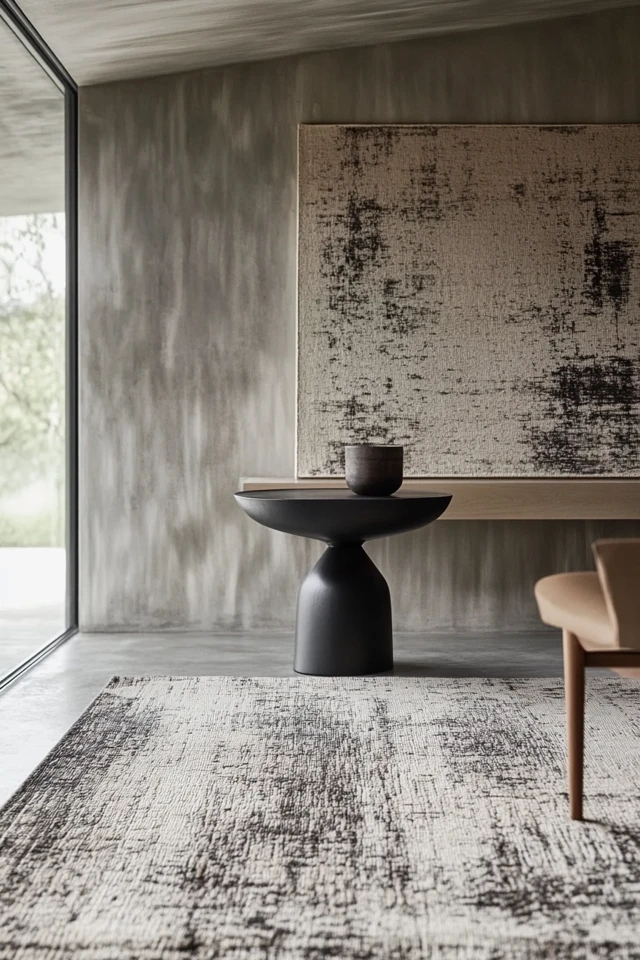Introduction
When I think about industrial design, I immediately picture exposed brick walls, raw concrete floors, and sleek metal finishes. It’s a look that oozes sophistication and urban charm. But as much as I love the rugged, edgy feel of industrial spaces, there’s one thing they often lack—warmth. That’s where rugs come in. A thoughtfully chosen rug can completely transform an industrial space, adding softness, color, and texture without compromising the raw beauty of the design.
The first time I incorporated an industrial-inspired rug into a project, it was for a client’s loft apartment. The floors were polished concrete, and while the space looked incredible, it felt cold—literally and figuratively. After some searching, I found a vintage-style distressed rug with deep grays and hints of rust. When we rolled it out under the sofa, the room instantly felt cozier and more inviting. That project taught me that rugs are a game-changer in industrial design.
In this post, I’m sharing my top picks for industrial-inspired rugs that will soften your space while staying true to the aesthetic. From distressed patterns to natural textures, these rugs strike the perfect balance between style and comfort. If your industrial space is feeling a bit too stark, this guide is for you.
Why Rugs Are Essential in Industrial Design
1. Soften the Hard Edges
Industrial design is all about raw materials like metal, brick, and concrete. While stunning, these elements can make a space feel hard and unwelcoming. Rugs counterbalance these materials by adding softness underfoot and visual warmth.
2. Define Your Space
In open-concept industrial spaces, rugs help define different areas, such as the living room or dining area. This creates a sense of organization and makes the space feel more functional.
3. Add Layers and Texture
Rugs are a great way to introduce texture to an industrial room. Whether you opt for a shaggy rug, a flatwoven design, or something in between, layering textures adds depth and interest to your space.
Top 10 Industrial-Inspired Rugs
1. Distressed Vintage Rugs
Distressed rugs are a natural fit for industrial spaces. Their faded patterns and muted tones mirror the raw, timeworn look of industrial design.
- Best For: Living rooms, dining areas, or under a statement industrial sofa.
- Style Tip: Choose a rug with a mix of grays, blues, and earthy tones to complement exposed brick or concrete walls.
2. Neutral Flatweave Rugs
Flatweave rugs are minimalist and practical, making them perfect for industrial interiors. Opt for neutral colors like charcoal, beige, or taupe for a subtle, sophisticated look.
- Best For: High-traffic areas like entryways or kitchens.
- Style Tip: Pair with metal or wood furniture to enhance the industrial vibe.
3. Jute and Natural Fiber Rugs
Natural fiber rugs, like jute or sisal, add an organic touch to industrial spaces. Their rough texture contrasts beautifully with smooth surfaces like concrete or steel.
- Best For: Layering under a coffee table or adding warmth to a bedroom.
- Style Tip: Combine with reclaimed wood furniture for a rustic-industrial feel.
4. Graphic Geometric Rugs
Industrial spaces thrive on bold, graphic details. A geometric rug with clean lines and sharp patterns can bring a modern edge to the room.
- Best For: Adding a contemporary twist to industrial designs.
- Style Tip: Stick to monochrome or muted tones for a cohesive look.
5. Overdyed Rugs
Overdyed rugs feature bold, saturated colors with a slightly worn look, making them ideal for adding personality to an industrial space.
- Best For: Creating a focal point in a minimalist room.
- Style Tip: Choose jewel tones like deep teal, ruby red, or emerald green for a dramatic pop of color.
6. Shag Rugs for a Cozy Touch
If you’re looking to maximize comfort, a shag rug is the way to go. Its plush texture contrasts beautifully with the sleek surfaces typical of industrial design.
- Best For: Bedrooms or cozy seating areas.
- Style Tip: Opt for neutral colors like white, gray, or beige to keep it grounded in industrial aesthetics.
7. Concrete-Look Rugs
For a truly industrial feel, consider a rug that mimics the look of concrete. These designs often feature gray tones with subtle patterns, giving the illusion of a hard surface while providing a soft touch.
- Best For: Minimalist industrial spaces or loft apartments.
- Style Tip: Pair with metallic accents and exposed beams for a cohesive look.
8. Vintage Persian Rugs
Persian rugs with intricate patterns and muted colors add a touch of old-world charm to industrial spaces. Their timeless designs balance the modern edge of industrial materials.
- Best For: Under dining tables or in living rooms with leather furniture.
- Style Tip: Layer a smaller Persian rug over a neutral jute rug for added texture.
9. Striped or Plaid Rugs
Stripes and plaids bring a subtle, masculine energy to industrial spaces. These patterns are simple yet striking, making them an excellent choice for adding visual interest.
- Best For: Hallways or under a desk in a home office.
- Style Tip: Choose a black-and-white or gray-toned pattern for maximum versatility.
10. Patchwork Rugs
Patchwork rugs, often made from recycled vintage carpets, are a sustainable and stylish addition to industrial interiors. Their unique, pieced-together look adds personality and depth.
- Best For: Creating a statement in larger living spaces.
- Style Tip: Opt for a muted color palette to keep the design cohesive.
Picture Gallery

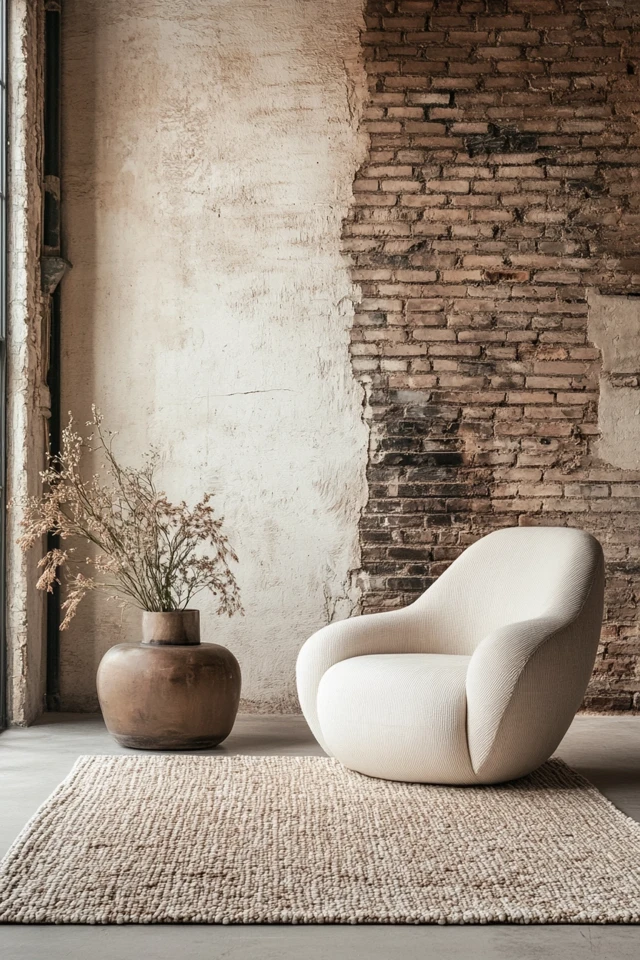
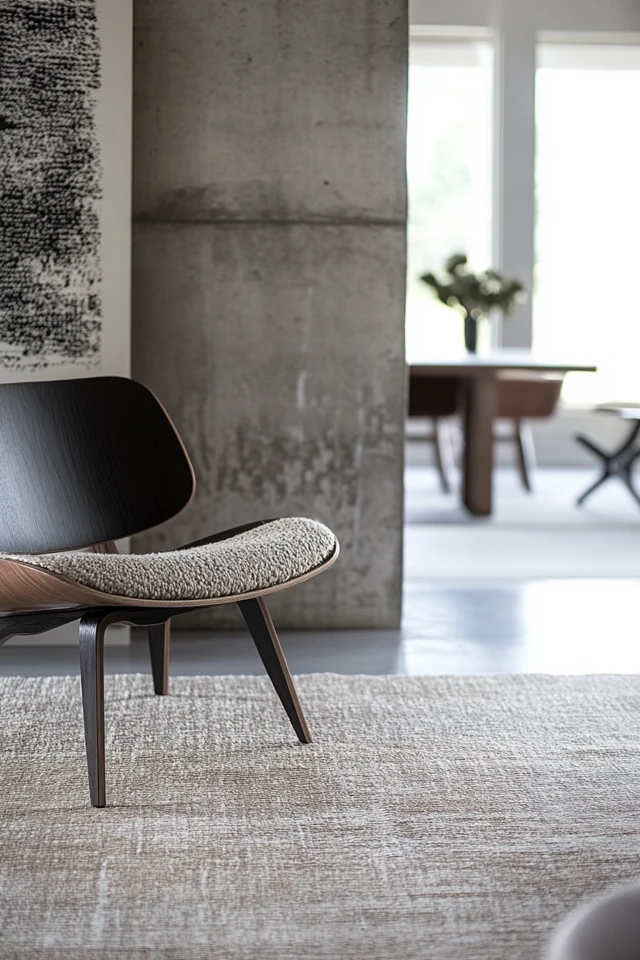
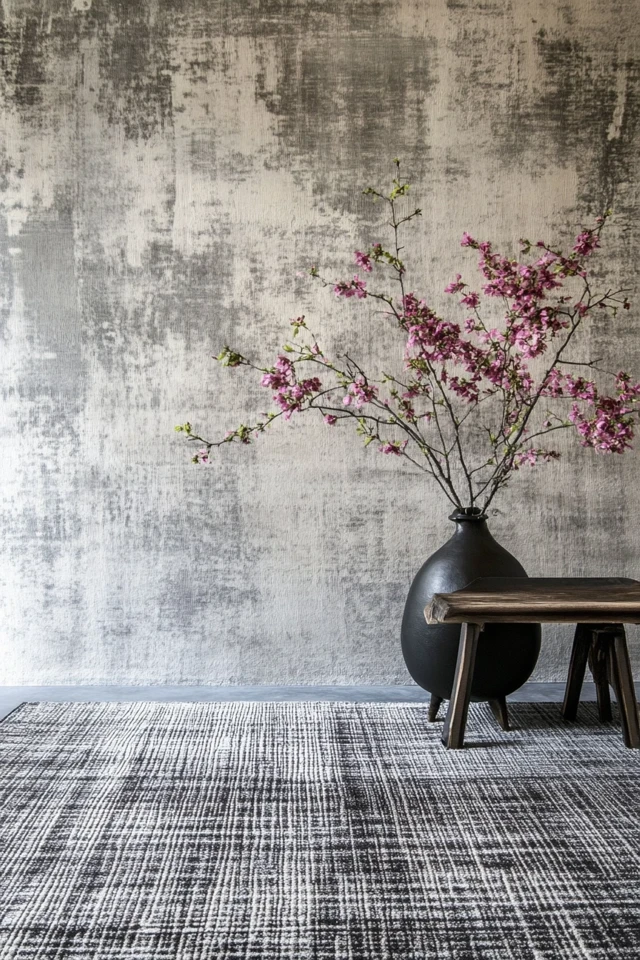
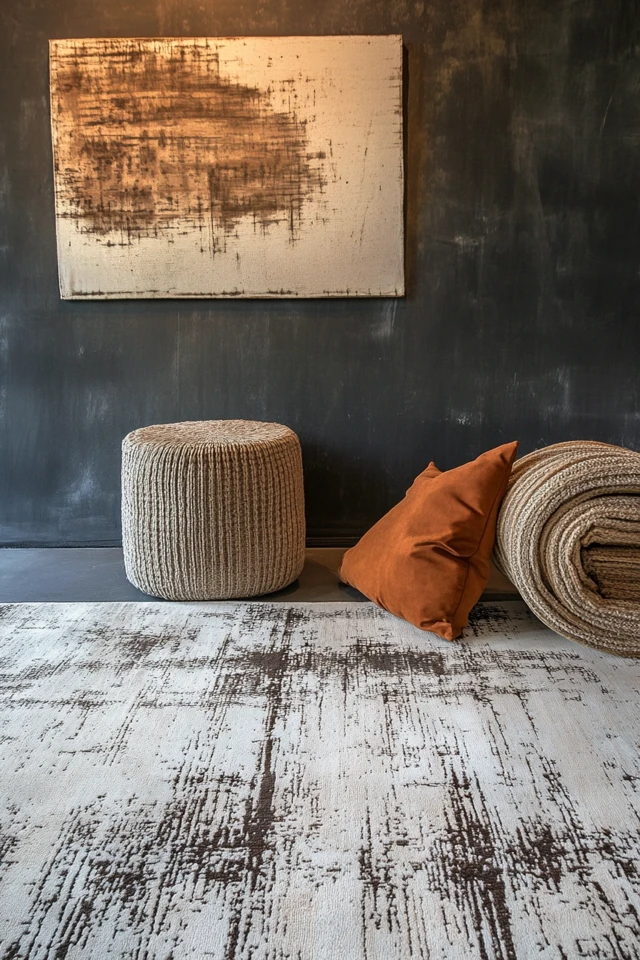
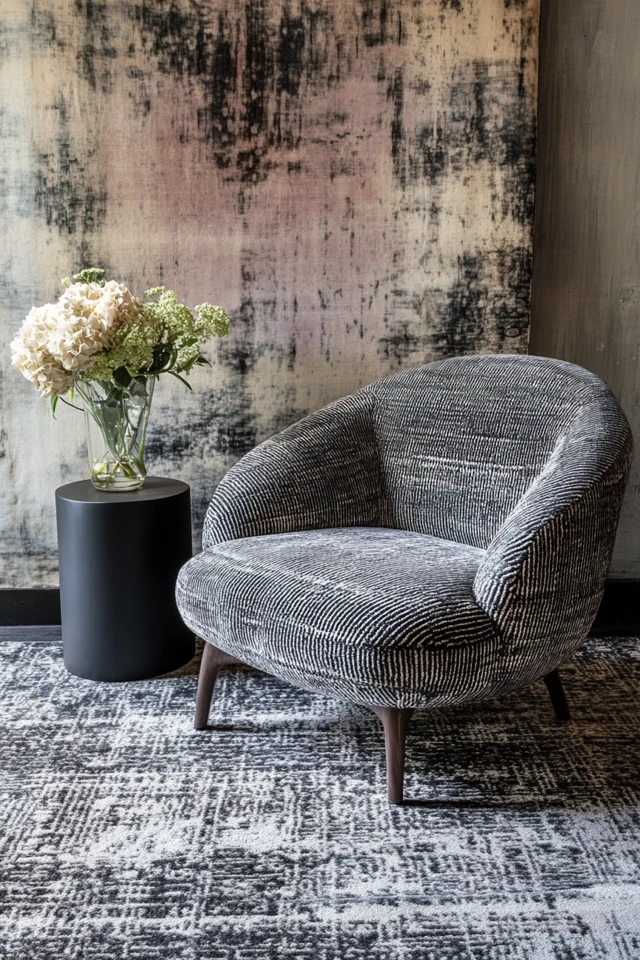
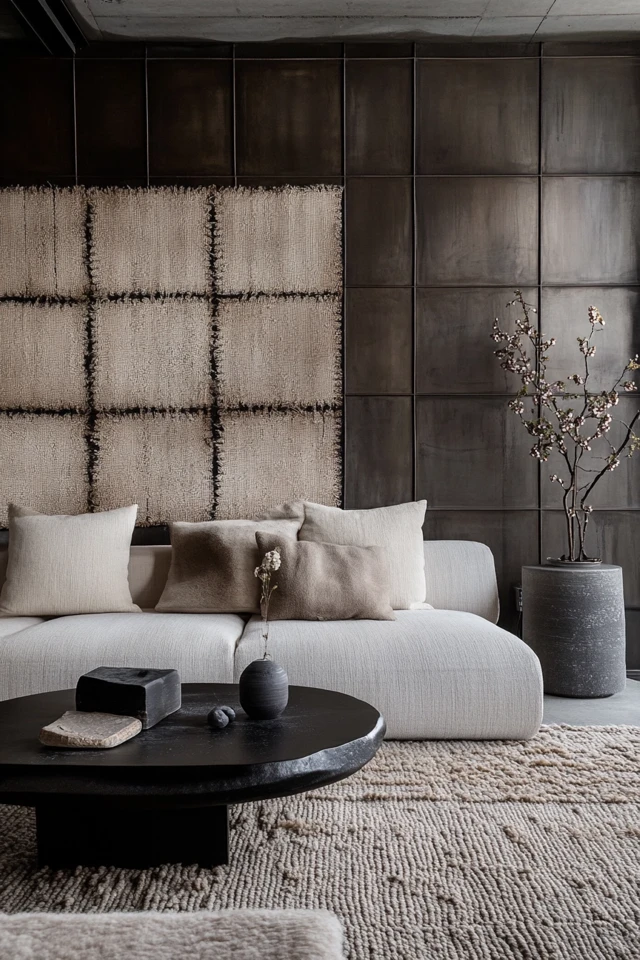
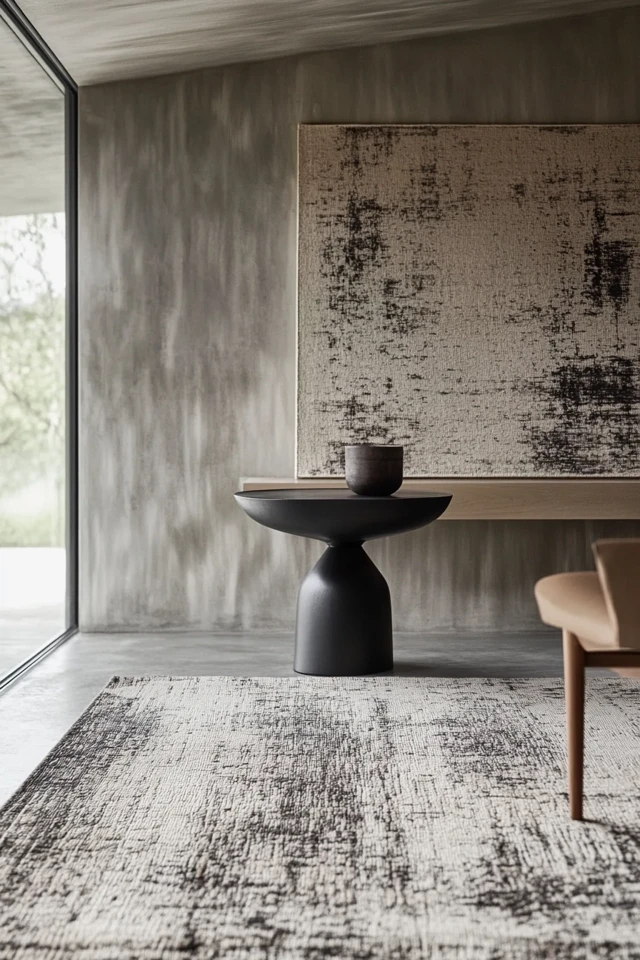
Tips for Choosing the Right Rug
1. Consider the Room’s Size
The size of the rug can make or break the look of your room. For living rooms, choose a rug that’s large enough to fit under all your furniture, or at least the front legs of your sofa and chairs.
2. Stick to an Industrial Color Palette
When choosing a rug for an industrial space, stick to colors that complement the aesthetic, such as grays, blacks, browns, and muted jewel tones.
3. Don’t Be Afraid to Layer
Layering rugs is a great way to add dimension and warmth to industrial interiors. For example, layer a smaller vintage rug over a larger jute or flatweave rug.
4. Focus on Durability
Industrial spaces often have a rugged, high-traffic vibe, so choose rugs made from durable materials like wool, jute, or synthetic blends that can stand up to wear and tear.
5. Experiment with Patterns
While industrial design is often minimalist, don’t shy away from bold or intricate patterns in your rugs. They can add a touch of personality and make the space feel more dynamic.
Conclusion
Rugs are one of the easiest ways to bring warmth, texture, and personality into an industrial space. Whether you prefer the timeless elegance of a distressed vintage rug or the boldness of a geometric design, there’s an industrial-inspired rug out there to suit your style.
In my own projects, I’ve seen how the right rug can transform an industrial space from cold and stark to cozy and inviting. It’s all about finding that perfect balance between rugged and refined, soft and strong. A thoughtfully chosen rug not only ties the room together but also creates a sense of comfort that makes your space feel like home.
So, if your industrial space needs a touch of warmth or a pop of personality, don’t underestimate the power of a well-chosen rug. It’s the finishing touch that will take your space to the next level.
FAQ
1. What type of rug works best in an industrial living room?
Distressed vintage rugs, flatweave rugs, and natural fiber rugs are great options for industrial living rooms. They add warmth while staying true to the industrial aesthetic.
2. Can I use a bold-colored rug in an industrial space?
Yes! While neutral tones are classic for industrial design, bold colors like deep blues, greens, or reds can add personality and create a focal point.
3. Are jute rugs durable enough for high-traffic areas?
Jute rugs are quite durable, but they’re best suited for low- to medium-traffic areas. For high-traffic spaces, opt for wool or synthetic blends.
4. How do I layer rugs in an industrial room?
Start with a large, neutral base rug like a jute or flatweave design, then layer a smaller rug with a bold pattern or texture on top.
5. What size rug should I use for an industrial dining room?
Choose a rug that’s large enough to fit the dining table and chairs, even when the chairs are pulled out. Aim for at least 24 inches beyond the table’s edge on all sides.

